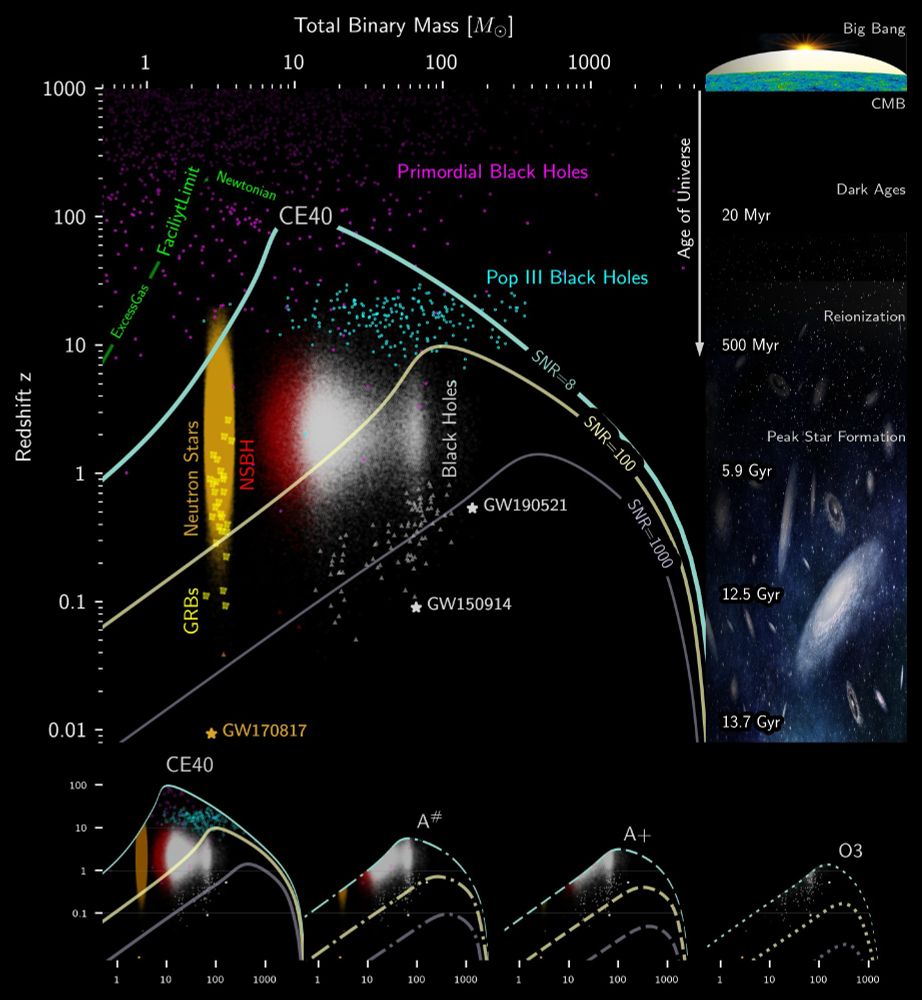
www.youtube.com/watch?v=z7t8...
Shichao Wu presented a search for stellar origin binary black hole signals in LISA & next generation ground-based detectors (LISA+3G) with pyCBC.
#GR26Amaldi16
Find out more: arxiv.org/abs/2506.01898

Shichao Wu presented a search for stellar origin binary black hole signals in LISA & next generation ground-based detectors (LISA+3G) with pyCBC.
#GR26Amaldi16
Find out more: arxiv.org/abs/2506.01898
www.youtube.com/watch?v=z7t8...

www.youtube.com/watch?v=z7t8...
An neutron star - black hole merger was potentially just observed! ⚫⚪ The false alarm rate is ~ 1 per 25 years, so this will need further investigation. With luck, there may be electromagnetic emission from the collision.
gracedb.ligo.org/superevents/...
An neutron star - black hole merger was potentially just observed! ⚫⚪ The false alarm rate is ~ 1 per 25 years, so this will need further investigation. With luck, there may be electromagnetic emission from the collision.
gracedb.ligo.org/superevents/...
www.sujobopps.com/postings/107...
www.sujobopps.com/postings/107...
tinyurl.com/5n8t6n7y

tinyurl.com/5n8t6n7y
Cosmic Explorer, the proposed US 40 km gravitational-wave observatories will observe millions of compact-binary mergers throughout the Universe and cosmic time.
CE will hopefully be joined by the Einstein Telescope and space-based LISA.

Cosmic Explorer, the proposed US 40 km gravitational-wave observatories will observe millions of compact-binary mergers throughout the Universe and cosmic time.
CE will hopefully be joined by the Einstein Telescope and space-based LISA.
Look out for updates on gravitational waves from me and my fantastic students. We study neutron stars and black holes with LIGO and are building tools for Cosmic Explorer and LISA.
Look out for updates on gravitational waves from me and my fantastic students. We study neutron stars and black holes with LIGO and are building tools for Cosmic Explorer and LISA.
We report a search for gravitational waves from these unusual binaries, which might include unusual neutron stars, quark stars, hierarchical merger of primordial black holes, or other exotic scenarios.
arxiv.org/abs/2308.16173

We report a search for gravitational waves from these unusual binaries, which might include unusual neutron stars, quark stars, hierarchical merger of primordial black holes, or other exotic scenarios.
arxiv.org/abs/2308.16173



